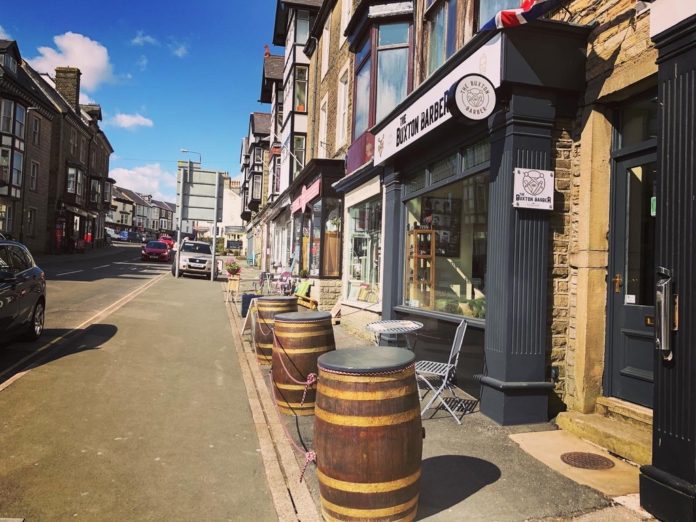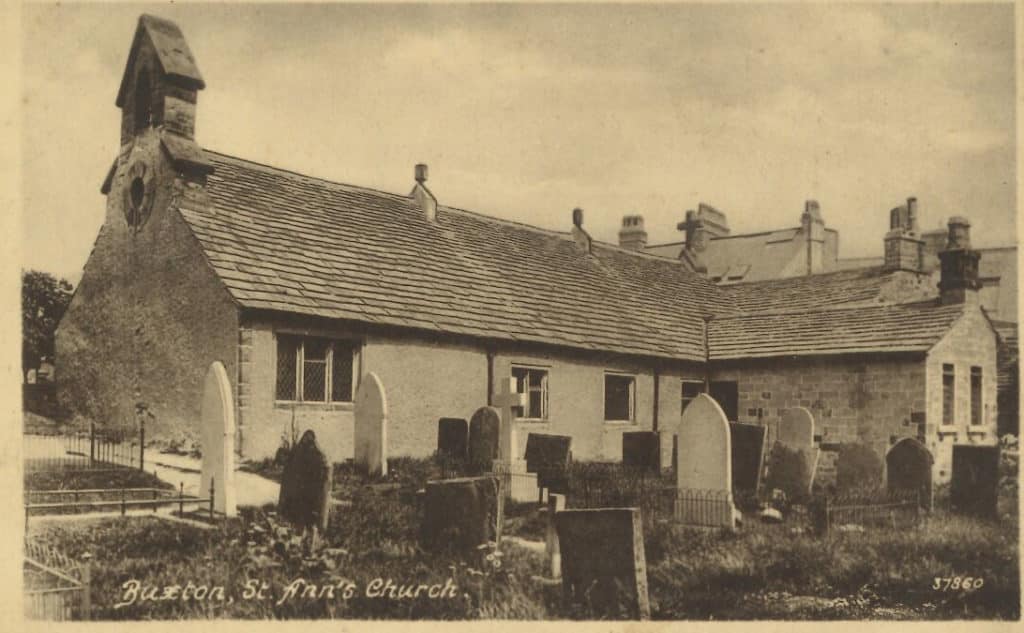Secret Buxton: An Alternative Tour Part One
Situated in a limestone basin a thousand feet above the level of the sea and graced by grand architecture, the town of Buxton has been a tourist destination for hundreds of years. If you asked someone familiar with Buxton what makes the place so unique they might answer “the water” or “the weather” or perhaps “the buildings” or maybe “the festivals”. All of these answers are true. Scratch beneath the surface, however and you will find hidden features that visitors and even most of the locals don’t know about; buried chambers, gruesome deaths, malignant phantoms and traces of mysterious ancient civilisations. Join Explore Buxton on an alternative tour around town. First stop: Higher Buxton.
Higher Buxton
The top end of the town centre congregates around the highest market place in England and if you are walking from Lower Buxton, you face a choice of steep descents but it will be worth it. The dark tourist can rejoice in a sequence of offerings.
1. A Cornucopia of Curiosity: Buxton Museum and Art Gallery
Despite being a small town museum run by the county council go, this is a gem for lovers of the unusual. The building itself, just off the market place, began life as a hydropathic hotel, emerging out of the town’s boom period as a Victorian health resort. There isn’t much trace of the hotel except for some rather splendid stained glass which must have once greeted the guests as they entered the steamy interior. The workmanship is reminiscent of the British Arts and Crafts Movement of the late 1800s and was provided by George Wragge whose Manchester company were the first ever to mass produce stained glass.
The museum’s permanent exhibition is called Wonders of the Peak; an impressive display that summarises the history of the area; from the coins and jewellery of ancient people who were among the first to brave the harsh conditions of the area to Buxton’s more recent history, containing the first ever manufactured bottles of mineral water and metal hip joints that used to be the speciality of the nearby Devonshire hospital. Particularly alarming are the skulls and bones of animals that dwelt this part of the world during the last Ice Age. It is sobering to realise that humans were not always top of the food chain and that bears, lions and tigers inhabited the local caves (some claim they still do; stay tuned for Part 3). Admission is free!
2. Shotgun Murder: The Eagle Hotel
Buxton is a quiet town and thankfully not frequently associated with violent murder. There are a few exceptions, however, including the incident outside the Eagle Hotel in 1975 where a man called Brian Hughes decided to brutally end the life of another man called John Craven on the day after Boxing Day. Goodwill to all mankind was not on the mind of the wielder of the sawn-off shotgun.
Back in those days, pubs closed at 11.30pm and outside on the pavement on that fateful night, Hughes settled his differences with Craven, shooting him in the stomach from two feet away before going home with his wife. The shot must have rung out across the expanse of the market place, punctuating the demise of the victim, who was left bleeding on the ground; a scene more reminiscent of Halloween than Christmas.
Apparently, there had been friction between the two men for years. In his defence, Hughes claimed that Craven had threatened to kill him; at one point claiming he was going to put a bomb in his house. It is not clear whether Craven’s threats were serious but it seems that Hughes thought so, opting to deliver a fatal strike first. There was no great man hunt: Hughes handed himself in at Buxton Police Station in the early hours of the next morning, confessing ‘You need look no further, I shot the bastard, he’d been threatening to kill me for the past three years and I’m glad he’s dead.’
Back in the 70s, pubs in this part of Buxton were a bit rough round the edges. Nowadays, the town has become more gentrified and The Eagle is a more welcome and relaxed establishment but you may spare a thought for a time when the town was more like the Wild West.
3. What Lies Beneath?
The windswept expanse of Buxton Market Place is fringed with independent shops, bars and cafes and some might argue a more earthy and characterful Buxton than the usual tourist trail of Lower Buxton. What a lot of people don’t think about is what may lie beneath it. A handful of local antiquarians have theorised that this summit was once the likely location of a Roman fort, which would have allowed a garrison to watch over the natural thermal baths at the bottom of the hill. Although it is true that the Romans commonly built fortifications to protect their real estate, there has been no evidence to back up this speculation. The archaeology instead points to Silverlands about half a mile away, where Buxton FC is situated.
What may be true is that the foundation of the market place does rest upon those of previous ages, the market itself dating back to the 17th century at least. Buxton Methodist Church is rumoured to have been built on the former site of a fighting cock pit and in more recent times, older Buxtonians may recall the underground toilets which, by all accounts, were a bit grim and smelly. You can see the entrance in the middle of the view in this old postcard above. The local council decided to fill in the public amenities in the 1970s and replace them with an alternative facility in the nearby town hall.
4. The Actor who Ate Himself to Death: St. Anne’s Church
Nestled in a corner, just off the High Street, at the top of Bath Road, this handsome little church is believed to be one of Buxton’s oldest surviving buildings with a date of 1625 carved on its porch. The charming interior, with its thick wooden beams, is well worth a peek and you can ruminate on the fact that when this 400 year old church was under construction, King Charles I was being crowned and the English Civil War would soon be brewing.
The Church is small and set back from the road slightly, as if humble about its accolade as an elderly structure. However, this is not St. Anne’s only claim to fame; the churchyard is also the final resting place of John Kane, an eighteenth-century actor who was as notorious for his big appetite as well as his dramatic performances. Whilst starring in a production at Buxton Opera House in Lower Buxton, Kane accidentally consumed hemlock instead of horseradish, leading to respiratory failure. It isn’t clear why Kane was buried in Buxton, instead of his hometown; we can only assume this was a matter of convenience in 1799.
With its crooked gravestones, St. Anne’s churchyard looks like a set from a Hammer Horror film. The grave of its most infamous resident is a listed monument. Over the wall can be found the curious curvature of Church Street, crowned by public house The Swan, whose Tartan Room is a marvel in itself. If you have the time, adjacent Scriveners second-hand bookshop is also worth a look, at one time featuring in The Guardian’s top ten second-hand bookshops in the UK.
Next stop: Lower Buxton! Look out for Part 2 coming soon…
Did You Enjoy This?
You might like our regular newsletter. We put all the best events, cultural highlights and offers from Buxton and the Peak District in your inbox every month.
This information will only be used to send you this newsletter. It is stored in Mailchimp.

















